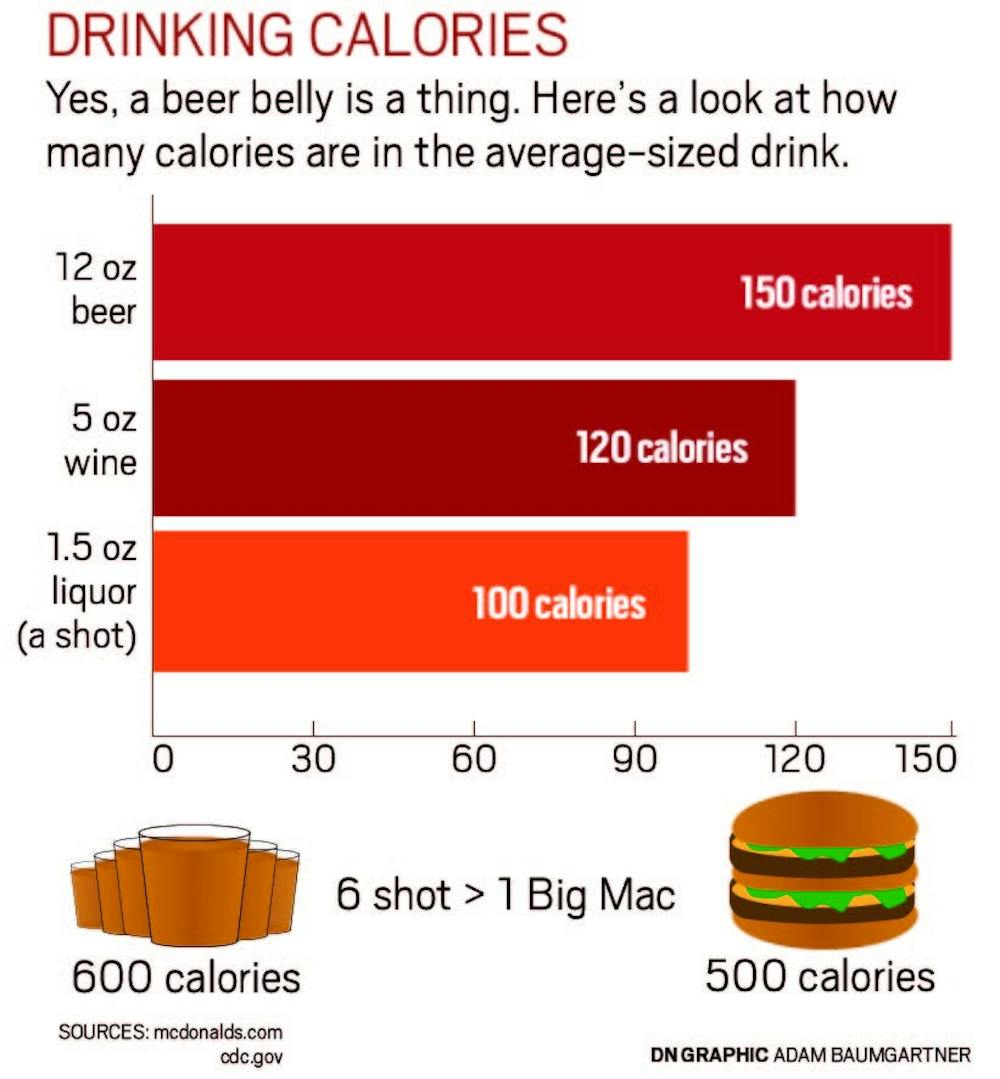A recent Ball State study found that one in five Hoosiers ages 18 to 21 binge drink, compared to 38 percent of those between the ages of 22 to 25.
People with higher incomes, those between the ages of 22 and 25 and men are more likely to binge drink, according to “The Burden of Alcohol Use in Indiana” study, which was conducted by Ball State’s Global Health Institute, or GHI. The report analyzed how drinking differs between gender, ethnicity, income, age and education.
The report was released in December 2012 and was written by statistics graduate student Ian Reid and actuarial science graduate student Senzeni Mhlanga-Fichani.
The two worked with health economics professor and director of GHI Kerry Anne McGeary.
“Part of the reason why I looked at this study is because we had some funding from the National Institute of Health to look at alcohol taxation and alcohol use overall,” McGeary said.
While the 18- to 21-year-old group is not limited to colleges, binge drinking has its place among university concerns.
“As academics, our true reason for being part of a community like this is that we have a strong affection for our students,” McGeary said. “I definitely get very concerned about these types of behaviors, because we do see in campuses with more binge drinking higher rates of crimes, accidents, all sorts of things. Death, even, in some cases from alcohol poisoning.”
Some students said they think binge drinking has its perks.
“You’re more sociable, you meet a lot of new friends and you have a good time in general,” Haley Hunter, a sophomore psychology major, said. “On the flip side, you can have a hangover, you sometimes do stupid stuff, the list goes on.”
For others, it’s just another form of entertainment.
“I’d say I choose to binge drink on occasion for a lack of anything better to do,” sophomore telecommunications major Jack Smith said.
Another area the group examined closely was income.
“Our hypothesis was that people with high income tend to drink moderately, but according to these results, we’re going to have to reject our [hypothesis],” Mhlanga-Fichani said.
About 17 percent of adults with annual household incomes from $15,000 to $25,999 binge drink, as opposed to 21 percent of adults making $50,000 to $74,999.
“We do find that people drink heavier and binge drink more when you get older and you have higher incomes because it is kind of expensive,” McGeary said. “We see drinking increasing with income.”
McGeary said she is also interested in how the economy and recession affect drinking in Indiana.
“Because the alcohol tax hasn’t changed very much and hasn’t been adjusted for inflation, alcohol has gotten much more affordable, so the real price of alcohol has fallen tremendously in the last few decades,” she said. “Even though it’s become more affordable, it still costs money, when it’s between alcohol and feeding your kids.”
Currently, alcohol in Indiana is taxed based on type. Beer is taxed at approximately 11 cents per gallon, liquor at $2.68 per gallon and wine at 47 cents per gallon.
Heavy drinking, two drinks per day for men and one drink per day for women, was also analyzed, where men were much more prominent than women and Hispanics more prominent than other ethnicities.
Education seems to have little to no effect on binge drinking or heavy drinking.
McGeary said the report could be a wake-up call for people who drink regularly.
“Alcohol has not come under fire as much as, for instance, as smoking,” she said. “In general, I think it is one of the more dangerous behaviors that we have as a nation because of all of the problems that can happen. It’s something to be much more aware of than we are.”


